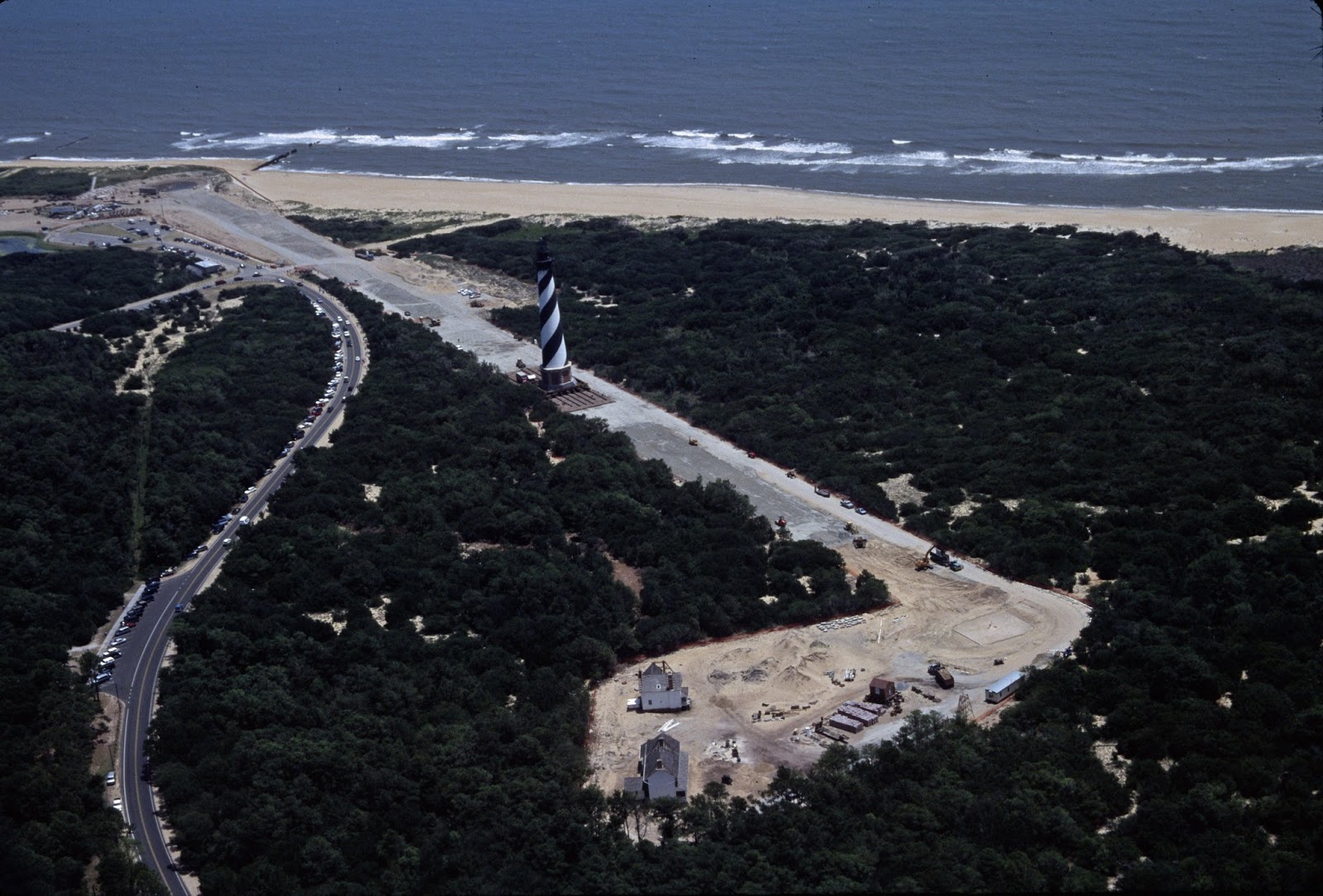
One of the speciality companies behind the historic move of the Cape Hatteras Lighthouse 20 years ago undertook another monumental task this past week — moving a 1700s-era mansion down the Chesapeake Bay.
The Galloway House, formerly in Easton, Maryland, faced a slow death from suburban sprawl. When Christian Neely bought the four-ton brick home, he knew it had to move or be swallowed by the march of development.
“In order to keep this amazing piece of American history and architecture from succumbing to these forces, we decided to do the seemingly unthinkable – pick the whole house up, brick chimneys and all, drive it six miles through the town of Easton, load it on a barge, and then float it 50 miles through the Chesapeake Bay to its new home in Queenstown, Maryland,” owner Christian Neeley said on the project website. “There, it will be restored to the original Georgian masterpiece that was once proudly called ‘Galloway.’”
The mansion’s journey — headed by Expert House Movers of Maryland — began Tuesday, Sept. 24, with a slow move by truck first across Route 50, then to the Chesapeake Bay, where it was loaded onto a barge for the 50-mile trek to Queenstown, Maryland.
[embedded content]
The house was built between 1760 and 1764 for the newly married William Nicols and Henrietta Maria Chamberlaine Nicols to serve as their home on a 600-acre plantation. Through the years, the property has served as a stock farm, a dairy, and finally the home of a florist for nearly 50 years.
“The new intended use for this property is to give four generations of a very mobile and dispersed family someplace to call home,” Neeley said.
Expert House Movers was one of two companies behind the historic move of the Cape Hatteras Lighthouse in the summer of 1999.
The lighthouse, in order to save it from the threat of the Atlantic Ocean, was moved from where it was built in 1870 to a spot just over a half-mile to the southwest.
A total of seven historic structures that make up the Cape Hatteras Light Station were also relocated and placed in spatial and elevational relationship to each other, exactly as they had been at the original site, the National Park Service said.


Using horizontally mounted hydraulic jacks which pushed the tower along a track system in 5-foot increments, it took 23 days to move the 4,830 ton brick beacon 2,900 feet to its new location, at a cost of $11.8 million.
This story originally appeared on OBXToday.com. Read More local stories here.


Be the first to comment